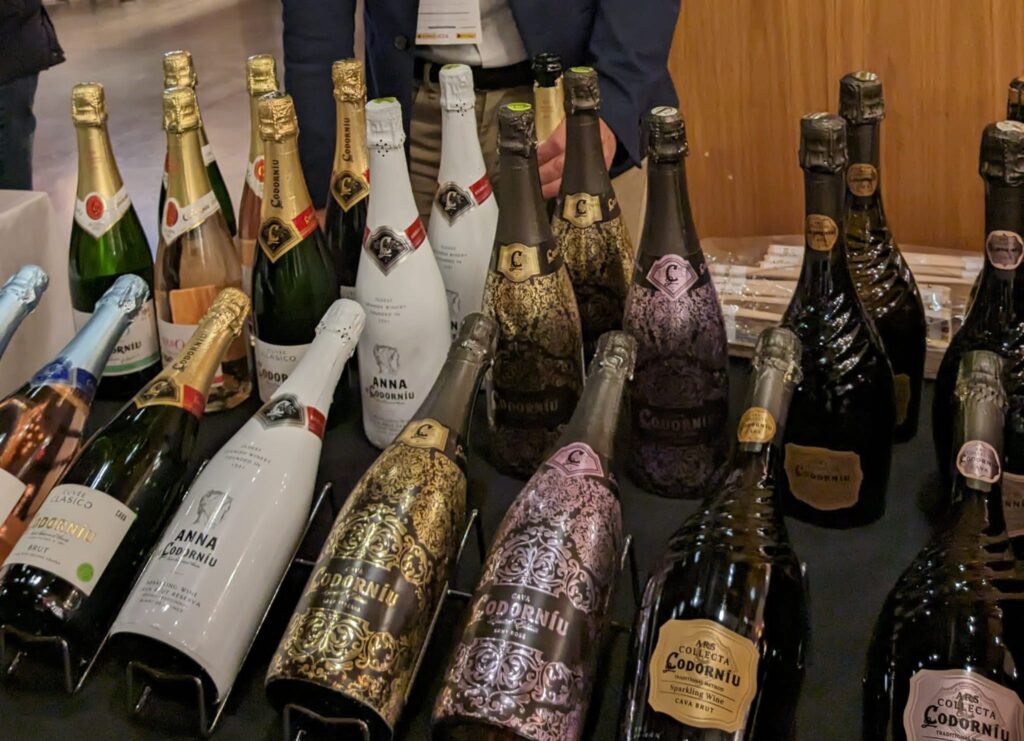Spain’s Great Match 2023 is an annual event that celebrates Spanish Wine and Gastronomy at Mercado Little Spain, a bustling market filled with various small booths specializing in different Spanish foods and drinks. Chef José Andrés and the famous Adriá brothers joined forces to create this exceptional restaurant.
Our Founder, Martha Cisneros Paja, has been encouraging New Yorkers for the past years to attend this event. The event is divided into media and consumer events. The consumer event proceeds to benefit and help the World Central Kitchen, and this year; it was crucial to collaborate from our corner of the world and support the international efforts of this impactful organization’s
Spain's Great Match 2023 at Hudson Yards
Our colleague Priya Sangameswaran, a latina professional, joined the event to experience the cultural diversity of foods and Wines from Spain. “There were 36 tasting booths and 11 booths in the “Discovery Area,” which were businesses looking for distributors in the US.” describes Priya.
Different foods were passed around, including gazpacho, croquetas, and churros, among many other items. Priya started tasting with Codorniu, a famous Cava producer from Greater Barcelona. Bubbles are an excellent way to start a tasting.
Cava is a Sparkling wine made in Spain. The most known region is Penedés, Catalonia; however, Cava can be produced in other areas if they attain the denomination of origin to label their wines as such.
Priya tried the classic Codorniu and an 18-month Reserva, which had more bready notes given its time on the lees. The acidity and bubbles of Cava make it a good pairing for various tapas and cheeses.

The Keys to Rioja's Excellence
There were different seminars available for those who attended. Priya joined the Rioja seminar. Rioja is the best-known wine region in Spain. The most common grape in Rioja wines now is Tempranillo. Riojas can be quite diverse depending on the territory and choices by the winemaker, despite the rules and standards for this Denomination of Origin. Apart from red wines made with the Tempranillo grape, Roja wines can be made with Garnacha and a few other red grapes or produced as a Rose or as a White wine with Viura, Tempranillo Blanco, and other white grapes. We were able to taste a few different wines. Two wines that stood out to me were the 2018 Bilbainas Lumen Brut Reserva (an espumante made with 100% Garnacha and 24 months on the lees) and the 2018 Beronia Reserva (a red made with 95% Tempranillo, 4% Graciano and 1% Mazuelo). The Lumen had fresh notes and a biscuity character, while the Beronia was well-rounded and well-structured with the small addition of other grapes and 18 months in French and American Oak barrels.
Have you heard about D.O. Valencia?
DO Valencia region of Spain was another region that stood out to Priya. She tried Clos de Lôm, who is looking for a US distributor. “The production region was in a valley with a continental climate but not too far from the Mediterranean Sea, producing ideal conditions for wine. The warm days, cool nights, and long growing seasons produce grapes that mature thoroughly but slowly. I tried four wines: a white, a rosé and two reds. The white was made with Malvasia, an aromatic white grape that presents well in the glass. The wine also spent four months on lees, giving it a fuller mouthfeel and more body than I expected. The Rosé was made with Monastrell, a grape that grows well in the region. The grapes were picked earlier to produce a crisper wine, not having as many red fruit notes as expected. The two reds I tried had a lot of potential if they aged longer. The 100% Garnacha wine had excellent components and body but would be much smoother and integrated in another year or longer. The Isidra was made with Garnacha and Tempranillo and spent 12 months in oak, giving it great potential to keep. The same family vineyard also produced Olive Oil, which I could taste. That’s a whole other world to learn about.”
Toro with Crescent Imports
We asked Priya to stop at the Crescent Imports booth, one of our partners in wine who had collaborated with Latinas Wine Club in the past. Crescent Imports is an importer of many different wines from Spain. Priya tried Cavas, wines from Navarra, a Syrah, and a Toro.
Toro is a region northwest of Spain, west of Ribera del Duero and Rueda. Toro wines are made with Tempranillo (Tinta de Toro in the region). The wine I tried was called Jota, with silky smooth tannins and deep fruit flavors.
Spain is a vast and varied region with an old culinary tradition they are proud of. Many areas are recognized in the wine world, evolving and producing different wines for consumption. Mercado Little Spain is a great place to try these other wines and foods, and the team there can direct you to the appropriate wines based on your taste and interest.
